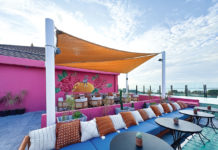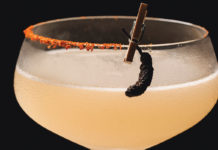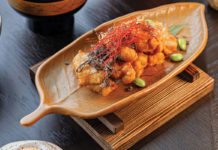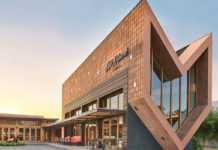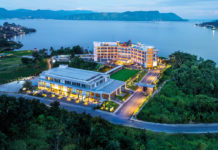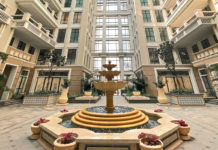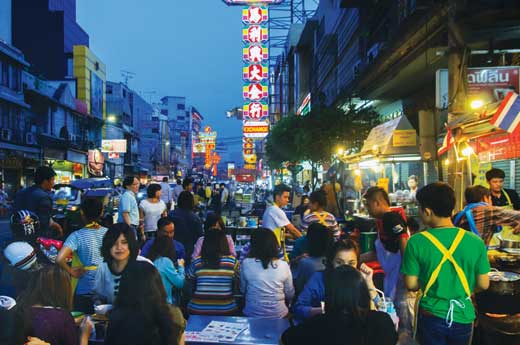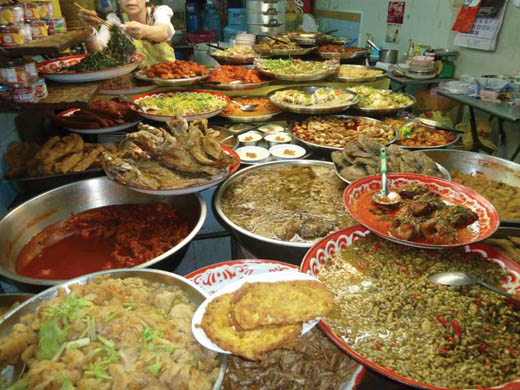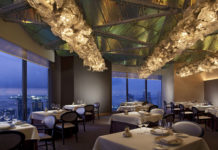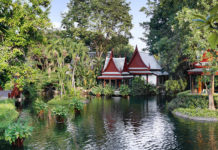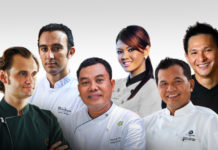Bangkok has long been known for its legendary street food, but with a strong showing on the latest S.Pellegrino list of the 50 Best Restaurants in Asia, the latest among its culinary accolades, it’s clear the Thai capital does haute cuisine just as well, making it a must visit for any discerning foodie.
Even with the occasional bout of political unrest, Bangkok remains one of Southeast Asia’s most popular tourist destinations. The reasons people make the trip to the Thai capital are numerous. Some are there to soak up the country’s culture and tour the city’s magnificent temples. Others are looking for the same kind of wild time they saw in “The Hangover 2.” But there’s a third, and increasingly persuasive, reason for people to descend upon “The Big Mango,” namely to sample the city’s amazing food.
Thai food is arguably the most popular Southeast Asian cuisine abroad, but the pad thais and tom yums people enjoy in Thai restaurants in their home countries are often dumbed down versions of the originals, lacking the complexity, balance or fiery heat of the authentic versions. People who are hungry to try the real thing should definitely make the trip to the Thai capital, where they’ll find lip-smackingly delicious eats everywhere from the humblest street side stall to the toniest fine dining establishments (many of which have been ranked amongst the world’s best).
Legends of the Street
The street food in Bangkok is renowned for good reason. You can find stalls selling tantalising treats on almost every corner, and with most dishes costing less than 2 USD, there’s no reason not to try a little bit of everything. Anywhere there’s a lot of people in Bangkok, you’ll be able to find lots of good street food, especially the bus intersections near universities, malls and hospitals.
Of course, some streets yield more easily than others. You might want to start your street food odyssey at Sukhumvit Soi 38, located right by the BTS (Bangkok Skytrain) station at Thong Lor. It’s a great introduction to the city’s street food scene as it is popular with tourists and most menus read in English. Don’t worry, it is still well-regarded by locals in the area, so you won’t be getting any defanged dishes here. Open from 6PM until the wee hours of the morning, the most recommended stand here, “Pad Thai Fire Look,” does an exemplary version of Thailand’s national noodle dish. Other stalls selling pork satay, wanton noodle soup and mango sticky rice are also consistently excellent.
The Chinatown areas of most cities are famous for their food, and Bangkok’s Chinatown, usually referred to as Yaowarat, is certainly no exception. Some people consider it to be the place where street food first became popularised in Thailand. It also houses some of the city’s fanciest and most expensive Chinese restaurants, though most are overpriced. Go explore the soi (alleys) off the main street and you’ll find a huge variety of excellent and cheap food stalls, with the seafood stalls being especially popular. The fishballs at Yoo (433 Yaowarat Rd), a family restaurant that’s been serving customers for 80-years, are said to be the best in the city, made with fresh Spanish mackerel with no added flour. Other specialities to look out for are Teochew-style pomfret fish rice porridge, curry crab, and the endless Thai-Chinese variations on dim sum and noodle soups.
If the idea of seeking tasty treats on the street is a little intimidating, you can also head to one of the city’s more tourist-friendly food courts, which still boast impressive selections at reasonable prices. The legendary MBK Shopping Centre has two, one traditional and one modern, while the slick new food court at CentralWorld offers up a good variety of Thai dishes from different regions.
The Rise of Thai Fine Dining
While the Thai capital has always been renowned for its street food offerings, it has seriously increased its credibility at the other end of the dining spectrum in recent years. Bangkok was well represented on the latest S. Pellegrino list of the Top 50 Restaurants in Asia, with six of the city’s restaurants making the cut, including Thai fine dining phenomenon ‘nahm’ at the top spot and innovative modern Indian gastronomy at Gaggan taking third.
Not only did it get ranked number one in Asia, ‘nahm’ (Ground flood, Metropolitan Hotel, 27 South Sathorn Road, Bangkok; +66 2 625 3388; www.comohotels.com/metropolitanbangkok/dining/nahm) also came in at #32 on the Diner’s Club list of the Top 50 Restaurants in the world. The mastermind behind ‘nahm’ is chef David Thompson, who first earned raves at the original ‘nahm’, which was Michelin-starred in London (the first Thai restaurant to ever earn that prestigious rating), before moving to open an outpost in Bangkok.
Local foodies were sceptical when Australian-born Thompson first set-up shop in the Metropolitan Hotel in 2010, but he’s won over the bloggers and critics alike with his traditional Thai cuisine that utilises premium ingredients and flawless technique to elevate dishes to ethereal status. Thomson makes no concessions for his many foreign customers – his food is as fiery hot as it is explosively flavoursome.
Two alums of Thompson’s London ‘nahm’, Duangporn Songvisava (Bo) and Dylan Jones, also made the move to Bangkok to start up Bo.lan (42 Soi Pichai Ronnarong, Sukhumvit 26, +66 2 260 2962), a Thai fine-dining restaurant that follows their mentor’s no-holds-barred approach to the country’s cuisine. The chefs use the slow-cooking movement ideology in all that they did, including meticulous sourcing of the best local produce to create dishes such as Southern style red curry of organic chicken from Phang-gna with banana heart. The food is as seductive as the fragrant garden setting.
To see the cutting edge of Thai cuisine, you can head to Sra Bua (Siam Kempinski Hotel Bangkok, 991/9 Rama I Rd; 02-162-9000; www.kempinskibangkok.com), which takes modernist techniques and elements of molecular gastronomy and uses them to give classic Thai dishes a contemporary twist, as in the tom yam with foamy galangal and baby lobster. If you feel like taking an indulgent gastro tour of the country, you can indulge in the 10-course tasting menu which should take you over three hours if you drink every drop of your wine pairings.
There’s another restaurant known for pushing the envelope in Bangkok. Gaggan (68/1 Soi Langsuan, Ploenchit Road, Lumpini, Bangkok; +66 2 652 1700; www.eatatgaggan.com), which took the #3 spot on the Top 50 in Asia list, is actually an Indian restaurant (ranked above any Indian restaurants in India) specialising in modernist takes on cuisines from the subcontinent. Chef Gaggan Anand, who interned with the research team at Spain’s famed El Bulli and “father of molecular gastronomy” Ferran Adrià, uses the knowledge he got from that experience to create playful dishes such as his Chowpati Year 2050, a take on the Indian street food favourite made modish through the addition of elements such as “yogurt spherification.”
The hippest restaurant representing Bangkok on the global restaurant hotlist, however, would have to be Issaya Siamese Club (4 Soi Sri Aksorn, Chua Ploeng Rd, Sathorn; +66 2 672 9040; www.issaya.com). Located in a luxurious 1920s villa surrounded by lush tropical gardens, Isseya is the flagship restaurant of local celebrity Chef Ian Kittichai, who has also opened venues in New York, Mumbai and Barcelona. Part restaurant, part lounge-bar, it features a stylish interior that blends traditional Thai fabrics and antiques with bright splashes of colour. The menu is rooted in Kittichai’s childhood in Bangkok, but also draws on his experiences of working in restaurants in the US and Europe. Traditional Thai herbs and vegetables, many of which are grown in the chef’s own organic garden, are given an international twist in dishes such as baby back pork ribs glazed with chilli paste and served on a tiny grill, followed by jasmine flower panna cotta with jasmine rice ice cream.


